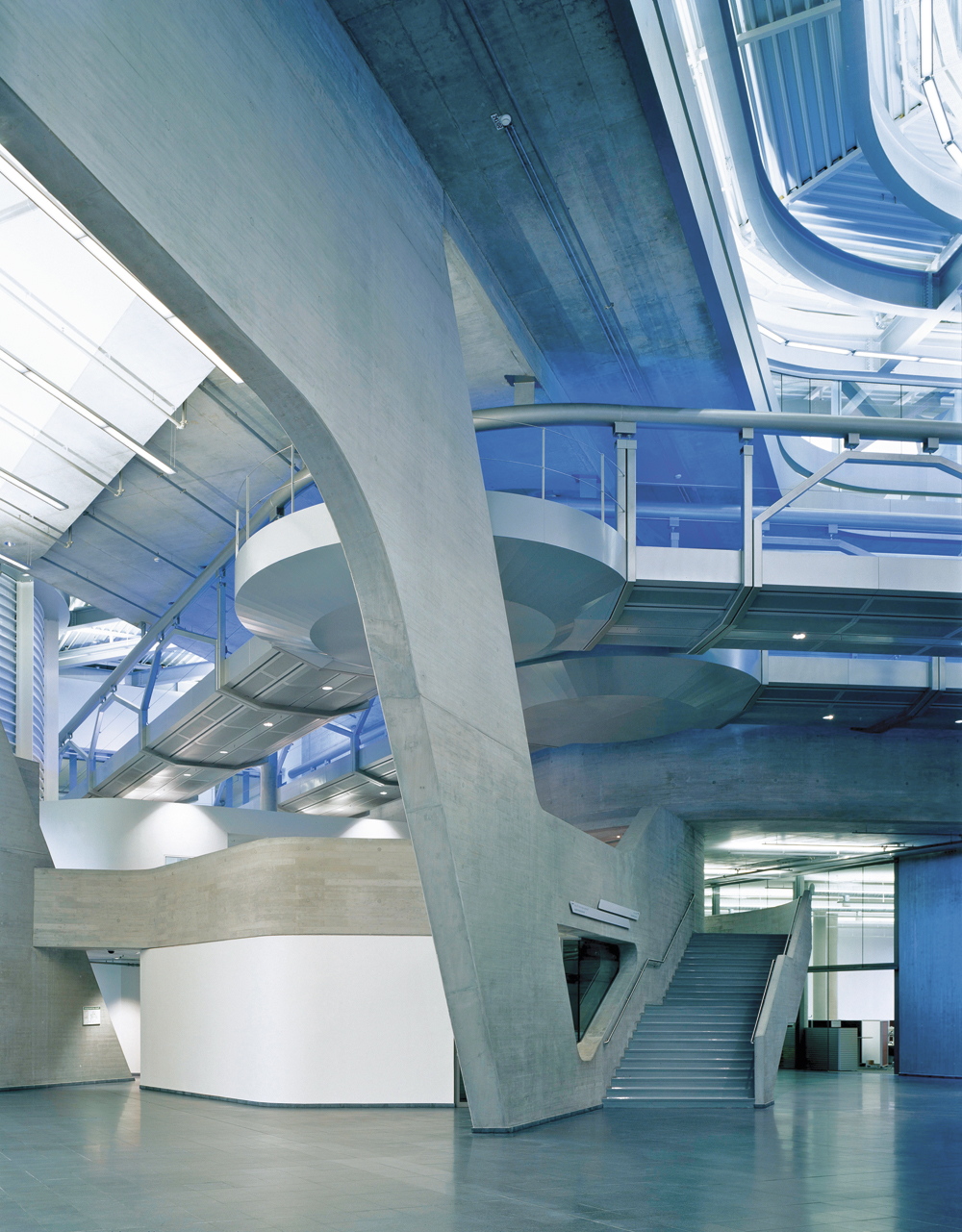A Heavyweight Contender

National Planning Policy Framework must involve informed examination of all sustainability options, including concrete
The National Planning Policy Framework (NPPF) has at its core a ‘presumption in favour of sustainable development’. To achieve this, application of the NPPF should place a stronger obligation on planning authorities to seek the advice of design professionals as to how best to achieve long-term sustainable development, believes Guy Thompson, head of architecture and sustainability at MPA The Concrete Centre.
‘A major contributor to a building’s sustainability and overall energy efficiency is the choice of construction material. The knowledge of how this impacts on a building’s long-term sustainability is not an immediate or natural fit with the skill set hitherto used by planning officers. Now that sustainability and not just the environment is to be placed at the heart of decision-making, it is imperative that planning officers fully involve design professionals in order to ensure the best sustainable solution,’ explained Mr Thompson.
He continued: ‘Failure to engage the design professional on a project-by-project basis in this way could compromise and undermine the ambition of the NPPF to deliver sustainable solutions that are central to achieving a low-carbon future.’
Exactly what constitutes ‘sustainable development’ has long been an area for debate. The NPPF enshrines the Brundtland principles of sustainable development, and clarifying this further the UK Sustainable Development Strategy, ‘Securing the Future’, sets out five guiding principles of sustainable development:
- Living within the planet’s environmental limits.
- Ensuring a strong, healthy and just society.
- Achieving a sustainable economy.
- Promoting good governance.
- Using sound science responsibly.
In order to achieve these aims it is important to focus on the practicalities of whole-life sustainability from design through to end of life, including the long-term operation of buildings, which is the source of the vast majority of CO2 emissions.
Arguably, it may be appropriate that the policy remains vague as this will leave interpretation and solutions to be debated and tested in more appropriate forums and, importantly, allow designers to make the case for their individual development proposals. The more specific criteria set out by some planning authorities are in danger of being over-simplistic using cherry-picked single-issue sustainability benefits rather than an overall holistic view. Sustainability issues are manifold and vary in importance and relevance depending on, among other things, the type of building being proposed, its location and its design life.
Well-informed design professionals and clients are calling for real, holistic, long-term sustainable solutions and, increasingly, are finding that that call includes an examination of sustainability from a range of aspects, including the local responsible sourcing of construction materials and the minimization of long-term heating and cooling requirements.
Heavyweight concrete construction offers a formidable range of long-term sustainability benefits. Its thermal mass is widely recognized as being an essential part of low-energy building strategies. The thermal efficiency of heavyweight construction reduces or even negates the need for energy-hungry air-conditioning and heating, plus it reduces the use of and/or the need for renewables. It also plays an increasingly important role in providing energy savings for housing, especially when used in conjunction with passive solar design.
In addition, heavyweight concrete construction is robust and flood resilient, has inherent fire resistance and sound insulation, and does not need additional finishes and chemical preservatives. The robustness and thermal efficiency benefits of heavyweight construction mean that it is fully able to cope with the increased risk of severe storms, flooding and hotter summer temperatures resulting from predicted climate change. At the end of their life, concrete buildings can be easily altered to answer new user demands, but should this not be an option, concrete can be fully recycled to create new construction materials.
Concrete products are locally sourced from within the UK. The average distance to site is only five miles for ready-mixed concrete and 90 miles for concrete products. This is in stark contrast to timber products and the raw materials for steel, which have often travelled many thousands of miles. Furthermore, concrete products are responsibly sourced with a high recycled content. Concrete blocks can contain up to 80% recycled material and, overall, do not produce waste. Indeed, the UK cement industry uses 47 times more waste than it produces.
In 2008, in order to move sustainability forward, the concrete industry signed up and committed to the Concrete Sustainable Construction Strategy. This landmark pan-industry agreement had, as its central premise, a common vision that ‘by 2012, the UK concrete industry will be recognized as the leader in sustainable construction, by taking a dynamic role in delivering a sustainable built environment in a manner that is profitable, socially responsible and functions within environmental limits’. The 2012 Concrete Sustainability Performance Report demonstrates how far the industry has come in realizing its vision to further increase its sustainability lead over other construction material sectors (see page 20 for further details).
Design professionals are best placed to ascertain and compare the real whole-life sustainability benefits of construction materials, together with the myriad of other design considerations necessary to determine the best sustainable development solution. Misapplication of NPPF could potentially remove this element of measured consideration and, in doing so, would seriously undermine its own ‘presumption in favour of sustainable development’. Informed design professionals must continue to be central to the specification and design process to ensure that the best holistic and long-term sustainable solution is chosen.
